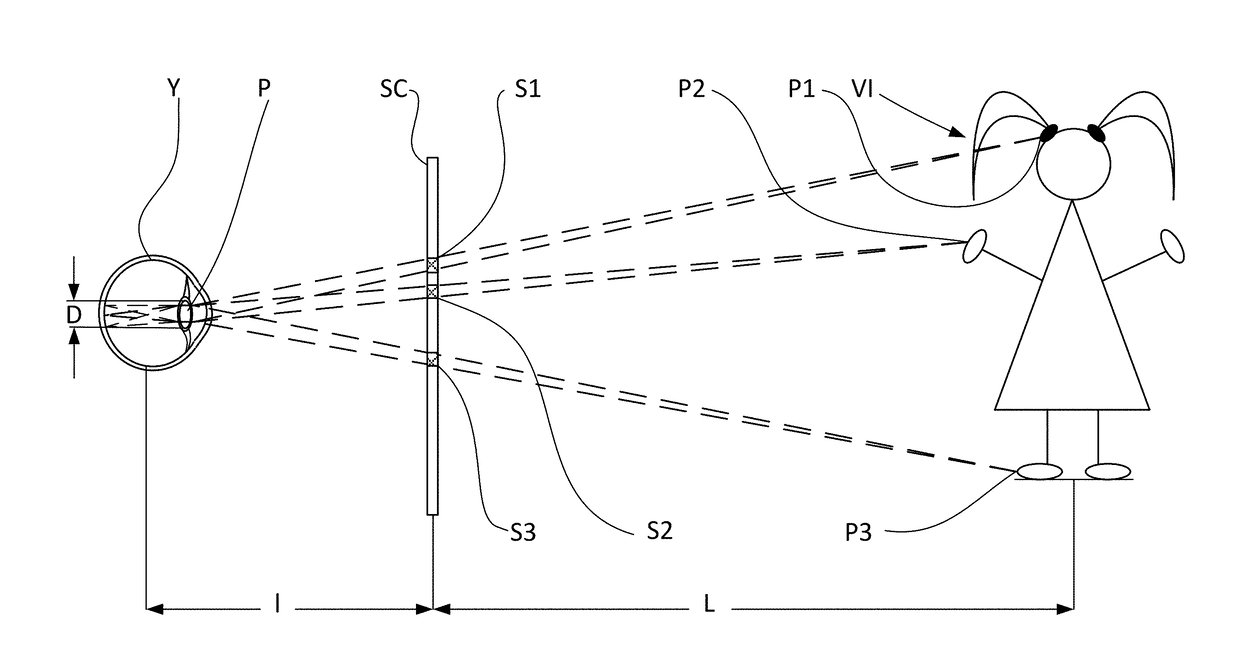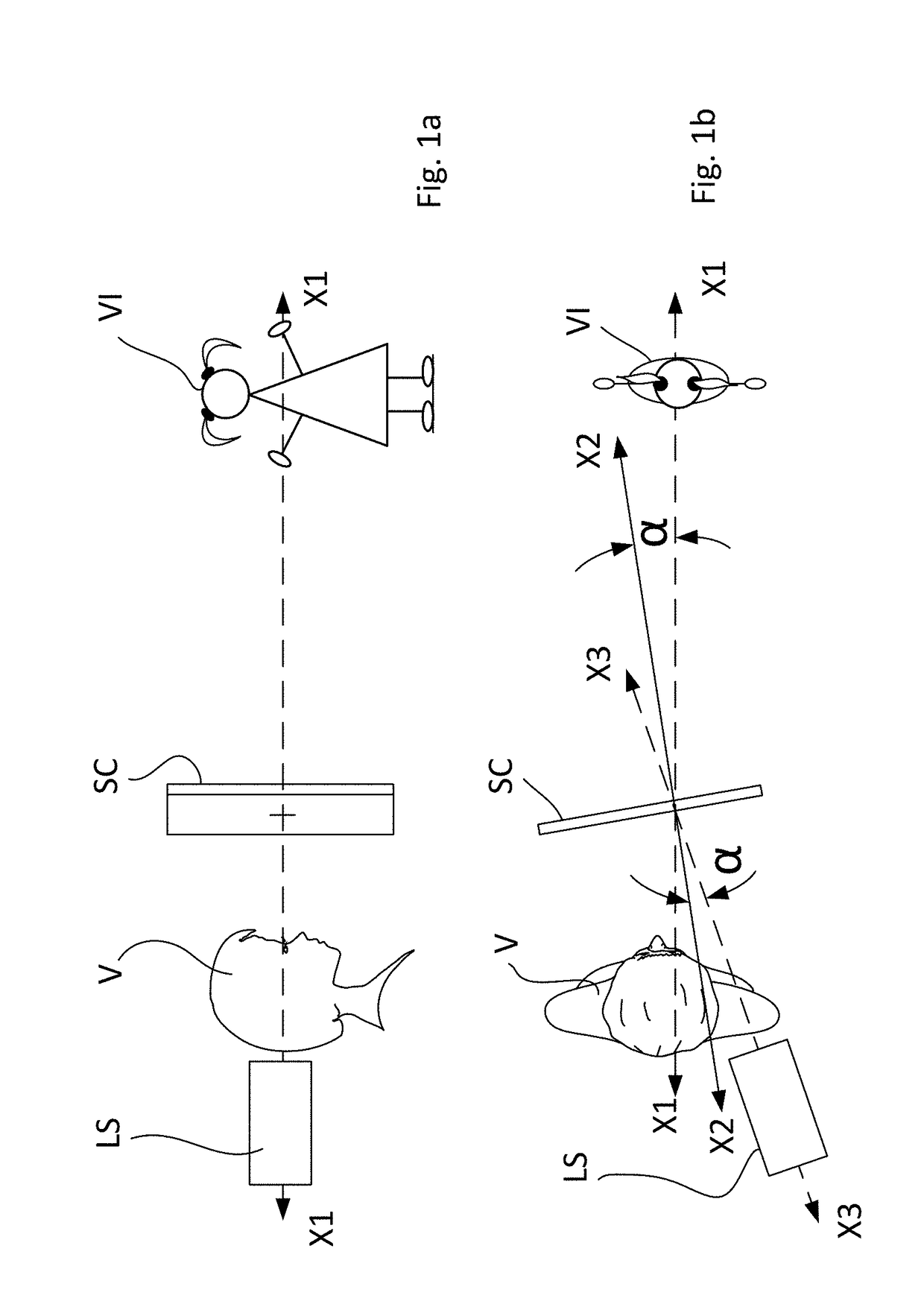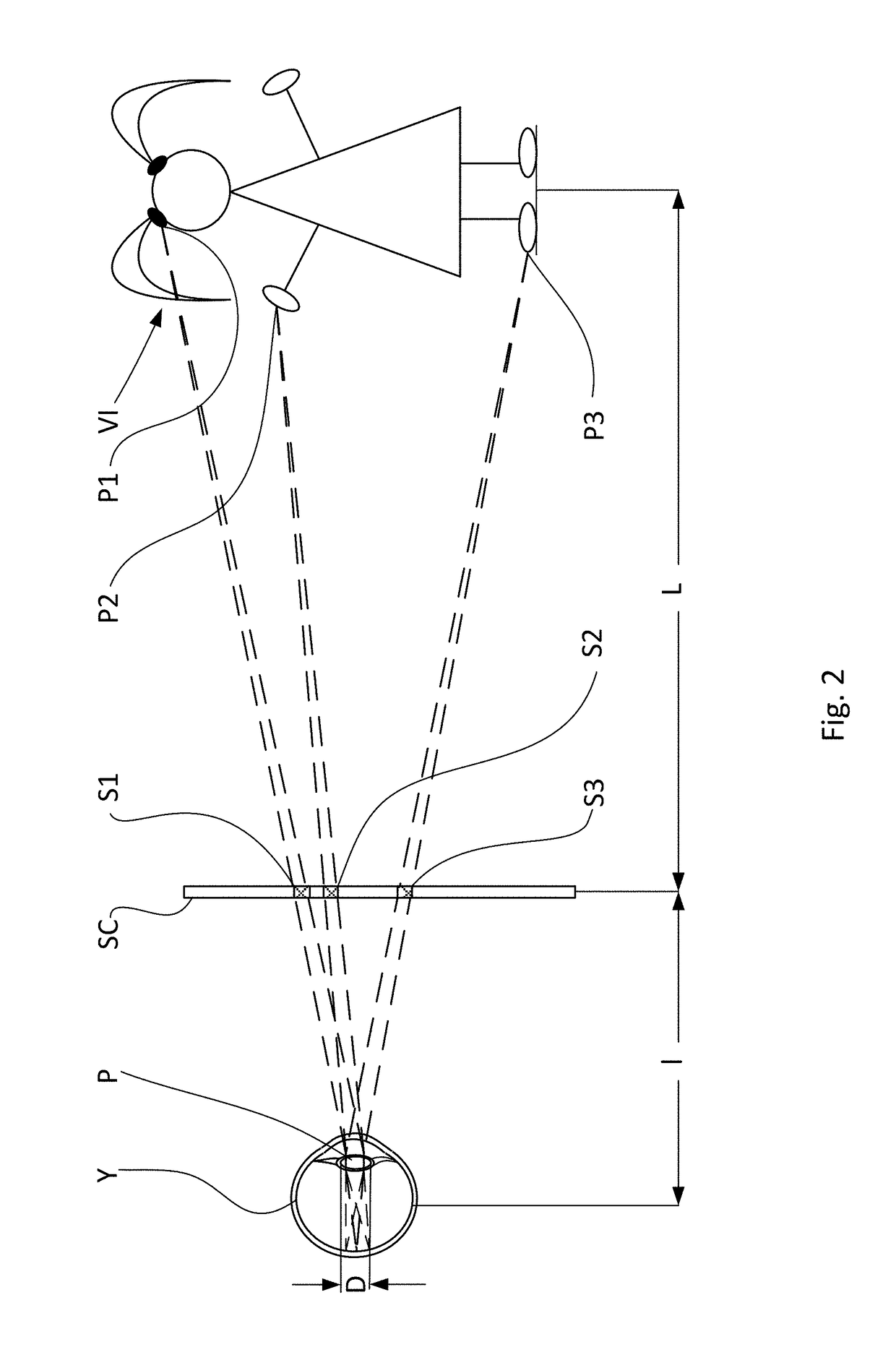Method of Forming a Rarefied Hologram for Video Imaging and 3D Lithography
- Summary
- Abstract
- Description
- Claims
- Application Information
AI Technical Summary
Benefits of technology
Problems solved by technology
Method used
Image
Examples
Embodiment Construction
[0034]This invention relates to a novel method of forming so-called rarefied holograms for video Imaging and 3D lithography. This concept of a rarefied hologram presented herein is entirely new and has been developed for the first time by the applicants. More specifically, the rarified holograms mean holograms that contain a reduced number of holographic elements and therefore possesses a “density” lower than conventional holograms that used for achieving the same results.
[0035]In other words, the invention also relates to dynamically processing coherent light for obtaining computer-generated holograms, which include elements the number of which is from ten to hundred times fewer than the number of elements from which conventional holograms are formed. This technology is applicable to 3D displays and 3D lithographers and is capable to create clear holographic virtual images which are free of so-called “ghosts” and characterized by reduced noise.
[0036]The method of the present invent...
PUM
 Login to View More
Login to View More Abstract
Description
Claims
Application Information
 Login to View More
Login to View More - R&D
- Intellectual Property
- Life Sciences
- Materials
- Tech Scout
- Unparalleled Data Quality
- Higher Quality Content
- 60% Fewer Hallucinations
Browse by: Latest US Patents, China's latest patents, Technical Efficacy Thesaurus, Application Domain, Technology Topic, Popular Technical Reports.
© 2025 PatSnap. All rights reserved.Legal|Privacy policy|Modern Slavery Act Transparency Statement|Sitemap|About US| Contact US: help@patsnap.com



